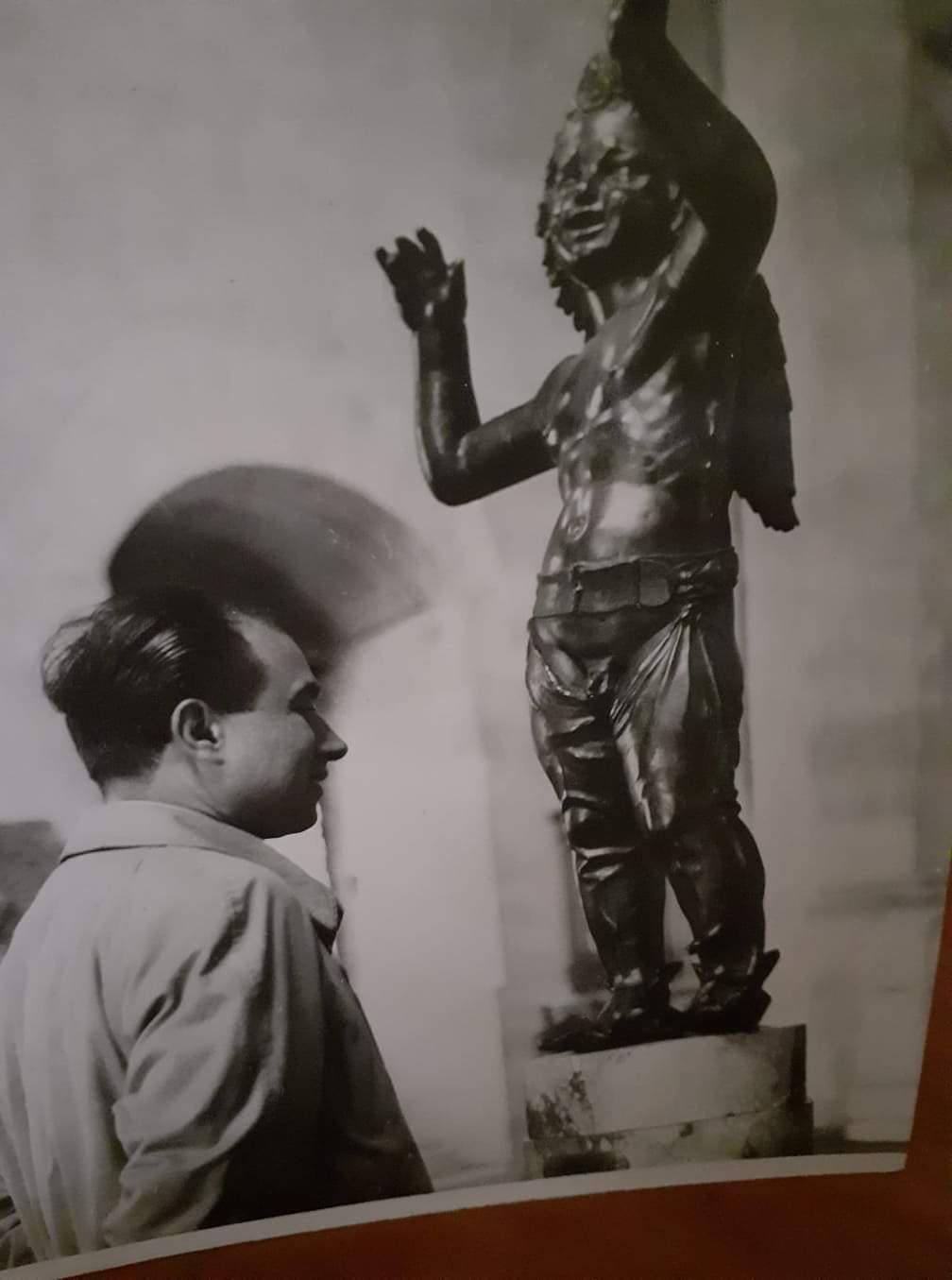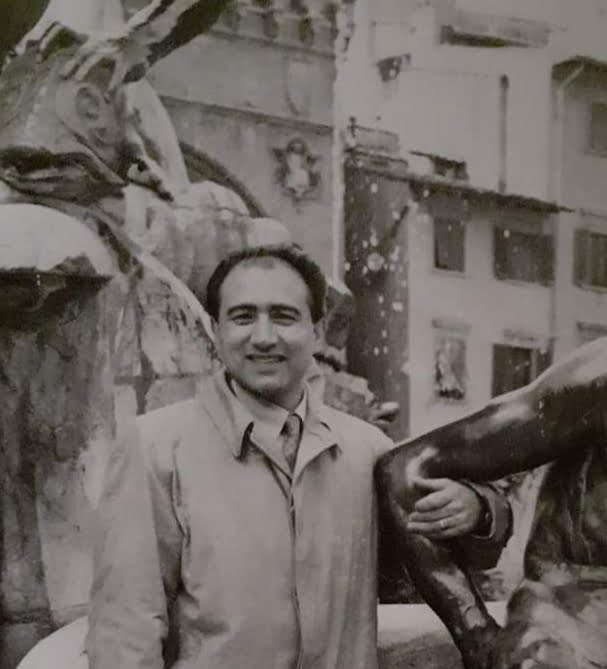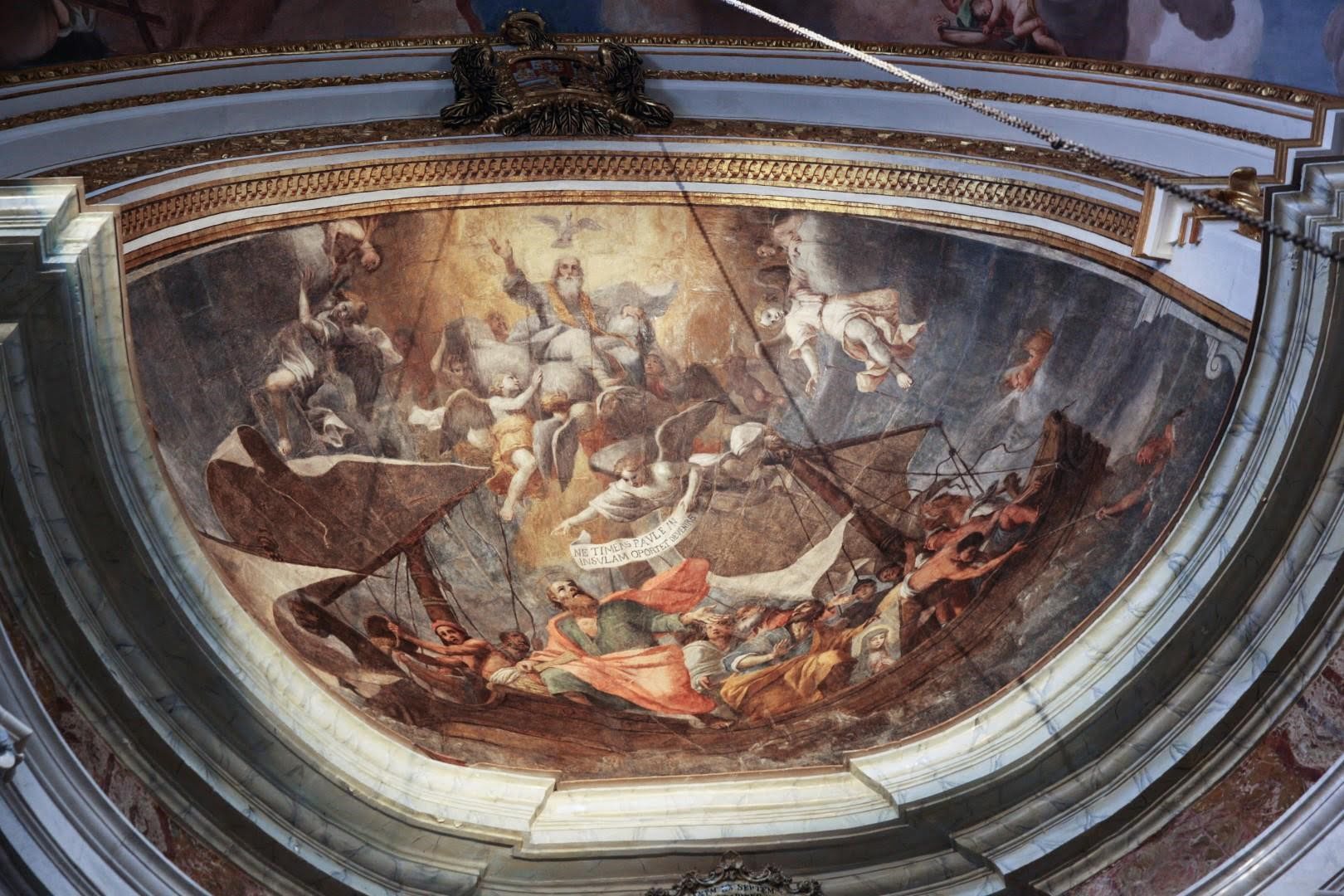The Maltese Restorer, Sculptor and Painter - By Chev. Vincenzo Maria Pellegrini
Page 1 | Page 2 | Page 3 | Page 4 | Page 5 |


During the period between 1950 and 1955/6 Samuel continued to work assiduously in the peaceful surroundings of his studio, producing art (these would eventually make an appearance at an exhibition gallery whilst others embellished the homes of the owners who had commissioned the works themselves).
In 1955/6, Samuel was in Rome attending restoration at the Istituto Centrale di Restauro, under the guidance of Professor Cesare Brandi. These studies were contemporaneous with the restoration of the famous Caravaggio painting ´The Be-heading of St John Baptist´ at the same renowned Institute. The masterpiece lies presently in the Co-Cathedral of St John the Baptist in Valletta. Samuel Bugeja, also during this time in Rome, attended a course in decorative design. At the completion of the restoration studies, the Institute attested as follows:
“Samuel Bugeja, during his studies at this Institute, continually gave proven possession to a high degree of proficiency that was fundamental in the attainment of his recognition as a professional restorer. The Institute could thus benefit of his capabilities for its own various major work opportunities. In fact, he actively participated in the restoration of the Pinturicchio affreschi in the Aracoeli Church, the detachment of the affreschi at the Roman Palatino and the Church dedicated to Saints John and Paul, the complex restoration of the affreschi by Masolino in the Saint Clement Church. Even in the field of moveable framed paintings Samuel Bugeja gave equally creditable performances of his high technical competence. He is held in high regard for his sterling contribution whilst participating on the important restoration of the 13th century painting at the Museum of the Civico of Viterbo (original colour recovery below extensive overlays) as well as all the other works in which he has ably participated (Caravaggio, Van Dyke, Domenichino, etc). This outstanding professional activity has seamlessly integrated with the theoretical lectures at the Rome University delivered by the Director of the Institute, Prof. Cesare Brandi. Moreover, his deep cultural interests took him to assignments in and outside Rome during this period dedicated to intense and prolific artistic activity. The convergence of similar multiple qualities attributable to Samuel Bugeja qualify him as an outstanding first class element in the field of restoration to a high degree. His standing predisposes him as particularly suitable to participate in professional continuity studies and technical up-dates that this Institute regularly conducts and would be more than happy to offer him participation”.
On his return to Malta in 1957 he was appointed Master of Art in the Secondary Technical Schools as well as Art teacher in Sculpture at the Government School of Art.

It was in July 1958 that he was commissioned by the Ecclesiastical Authorities to restore the apse of the Cathedral Church at Mdina dedicated to Saint Paul. The apse painting, by Mattia Preti, is dedicated to the shipwreck of Saint Paul and probably executed in 1665, during which time Preti was still actively engaged (on the Knights of Malta account) on the vault of the Co-Cathedral of Saint John in Valletta. Besides the apse, Preti has other works of art in the old Cathedral.
One has to keep in mind that Preti used to paint in oils directly onto the stone. Thus, the only preparation for the oil painting was probably just a thin protective oil-based layer. This technique did put Samuel Bugeja in difficulty with certain zones unable to detach. This is due to the intrinsic behavior of the Maltese stone that, once covered, cannot be worked on again because of the risk of exfoliation – an aspect that makes the restoration even more complicated. Samuel, however, adapted his knowledge and technique – after having cleaned the top of the paint. It was at that stage that he would start to re-instate the colour film by means of injections and glues that retain their stability with time. Even more difficult was the ordeal of removing the incrustations due to calcium carbonate that were visible in many parts. These stains had to be removed using powerful solvents applied in a scientific way, followed by few touches, enabled the painting to regain the original Preti beauty it displayed 3 centuries back.